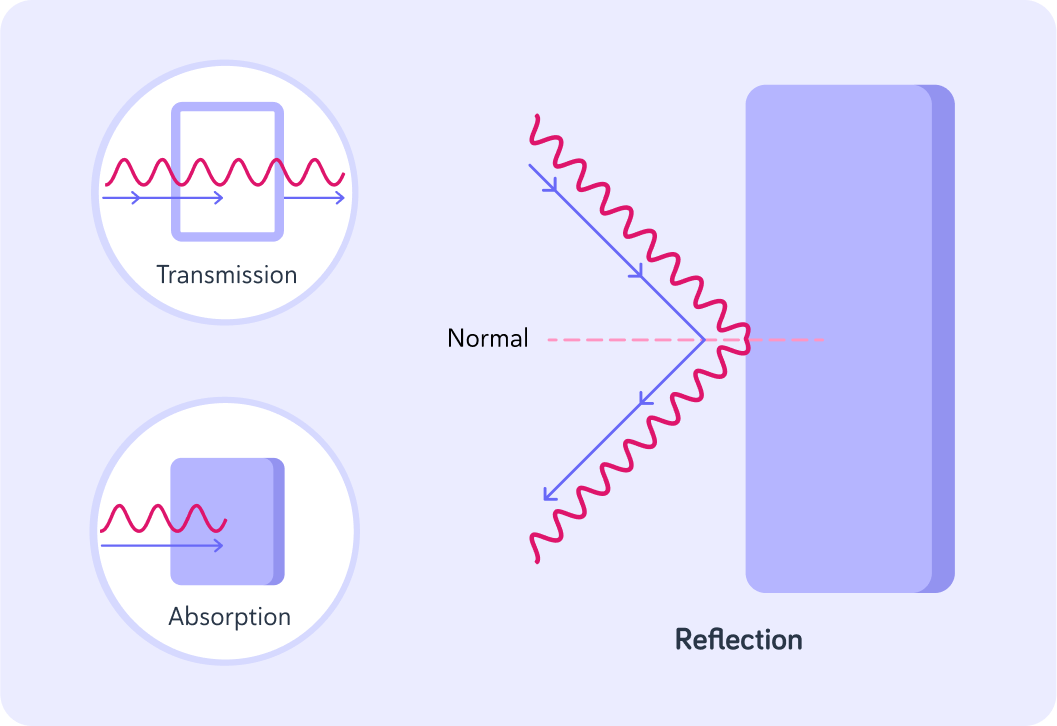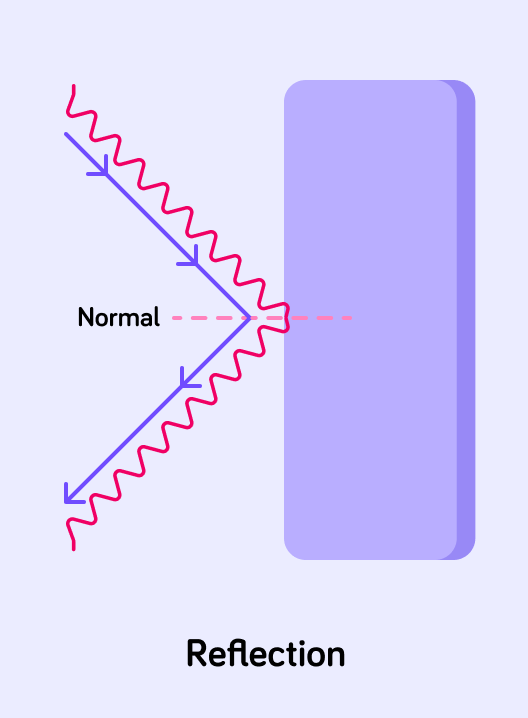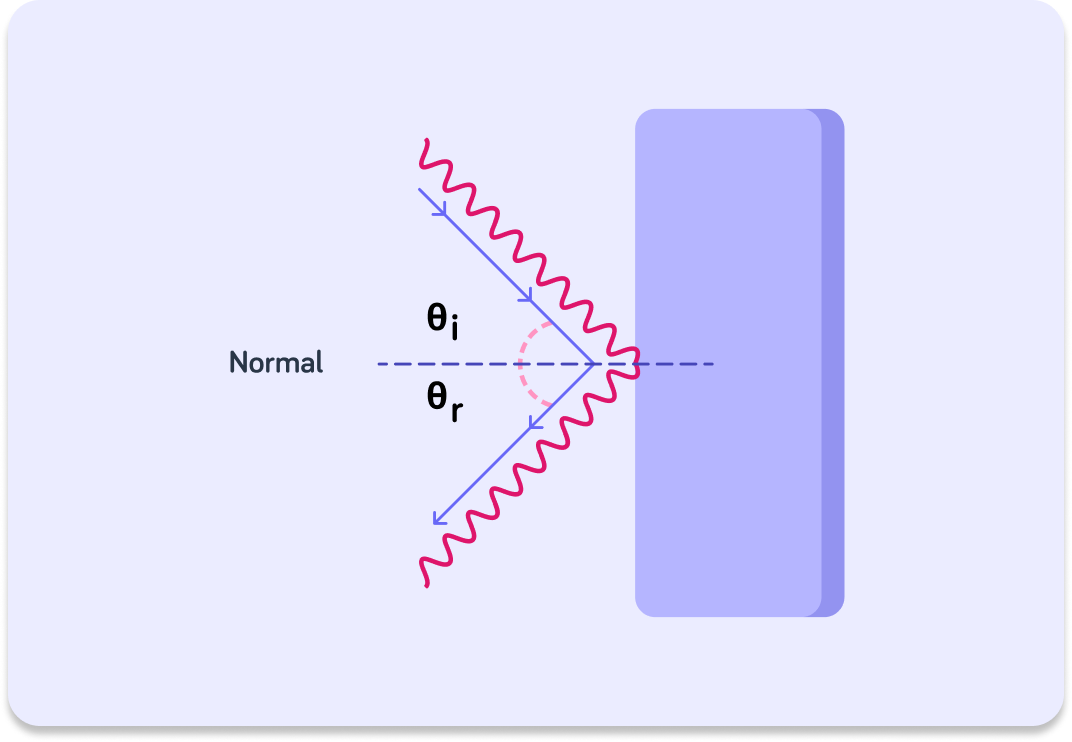YOU ARE LEARNING:
Reflection at a Boundary

Reflection at a Boundary
When waves hit a surface, they're either transmitted, absorbed or reflected. If they are reflected, they obey the law of reflection: the angle of reflection equals the angle of incidence.
In this lesson, we will look at how changing from one medium to another will affect the behaviour of a wave.
A light wave travelling through air finds a window in its path. When the light hits the glass it is...

Charlie is sitting in the sun wearing a black t-shirt. He notices his t-shirt is getting very hot. This is because the light waves from the sun are getting _______ by his t-shirt.

A light wave travelling through air finds a mirror in its path. When the light hits the surface it is...

These are the 3 types of behaviour a wave can have at the boundary of 2 media.
Some transparent media can also bend waves, but we will look at this in later lessons.

Let's take a closer look at reflection.
Notice that the wave is hitting the surface at an angle. This angle is measured against the normal - **** an imaginary line drawn perpendicular to the surface.

What do think the "angle of incidence" might mean?

The angle of incidence is defined as the angle formed by a wave incident on a surface and the normal. What do think the "angle of reflection" might mean?

The angle of incidence, θi, and the angle of reflection, θr, are related by the Law of Reflection. From looking at the diagram, which option do you think is a correct? A.θi>θr B.θi=θr
C.θi<θr


Against what are the angle of incidence and the angle of reflection measured?


What does the law of reflection state?

To sum up: Waves at a boundary of mediums (for example window panes, t-shirts or mirrors) will either be transmitted, absorbed or reflected. If they are reflected, they obey the law of reflection, which states that θi=θr .
